Pickleball has taken the sports world by storm, combining elements of tennis, badminton, and table tennis into one exciting game.
Just like any sport, players develop and hone their skills over time.
To aid in this journey, understanding pickleball skill levels and ratings is crucial.
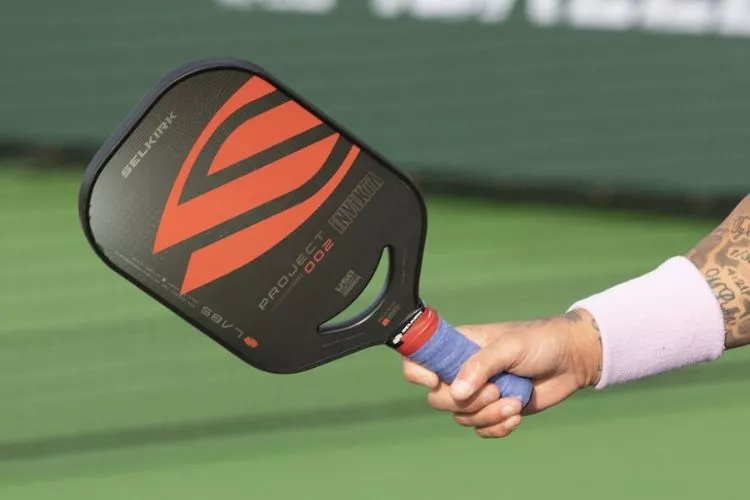
In this article, we’ll explore the various levels, from beginner to advanced, and how to evaluate and improve your skill set, ensuring every match is as enjoyable and competitive as possible.
Understanding Pickleball skill levels and ratings (A Proper Guide)
Pickleball, a unique blend of tennis, badminton, and table tennis, continues to surge in popularity across the globe.
With its tableau of players ranging from enthusiastic novices to seasoned pros, the game employs a meticulous system of skill levels and ratings to maintain fair play and competition.
Pickleball Skill Levels
When you’re starting to play Pickleball, it’s essential to understand where you stand on the skill ladder. This can help you find appropriate matches and set attainable goals to improve.
- 1.0 – 2.0 (Beginner): At this stage, you’re just learning the basics—how to serve, return, and volley. The rules might still be a little confusing, and you might make quite a few fouls. Beginners tend to stay near the baseline and often miss easy shots.
- 2.5 – 3.5 (Intermediate): Once you reach this level, you have grasped the nuances of the game. You’re able to maintain a short rally, understand scoring, and can even play doubles. Player positioning becomes more strategic, and you execute more successful volleys and serves.
- 4.0 – 5.0 (Advanced): Advanced players exhibit a significant level of skill and strategy. You consistently make fewer in-game errors, are comfortable with both forehand and backhand shots, and are adept at performing serves from any position. Your shot selection varies, and you’re likely to use tactics such as dinking or drop shots.
- 5.5 and above (Professional): At this stage, you’re a serious player, likely competing in tournaments. Your consistency, power, depth, and accuracy set you apart. You fully utilize the court, demonstrate strategic pickling, and are agile in your footwork and positioning.
Pickleball Ratings
To ensure balanced games, most tournaments use a player rating system developed by the USA Pickleball Association (USAPA). The Pickleball Tournament Player Ratings (UTPR) denote a player’s skill level between 1.0 (novice) to 6.0 (pro).
The UTPR isn’t static; it’s dynamic and adjusts based on your tournament performance against other rated players. It’s a beneficial system that ensures players can compete against others of a similar skill level.
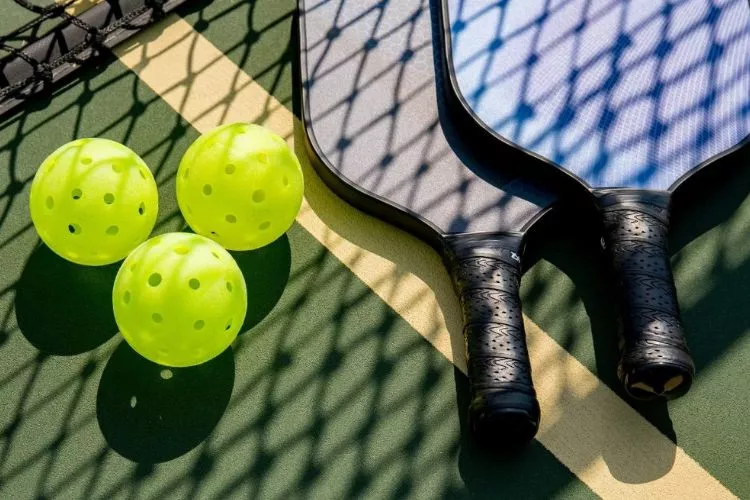
While informal games typically don’t use official ratings, knowing your UTPR can aid in assessing your current skills, understanding areas for improvement, and tracking progress. After all, progress measurement is crucial to achieving a higher skill level in Pickleball.
In the over-hyped chaos of games on the court, understanding your own abilities and the proficiency of those around you stands at the heart of the game’s enjoyment.
Whether you’re a just hooked beginner or a tournament-bound pro, knowing pickleball skill levels and ratings can help carve a path to improvement and satisfaction in this fast-paced sport.
How do I determine my skill level in pickleball?
Understanding your current skill level is essential for your development as a pickleball player. Here are few factors you should consider:
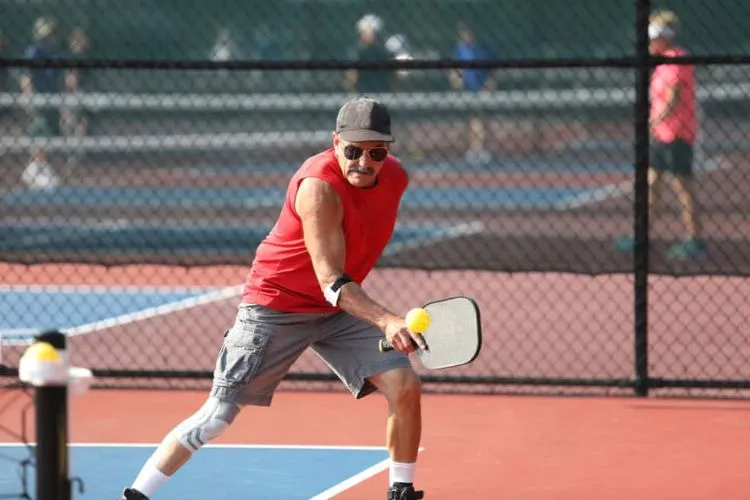
- Basic Skills: Beginners generally lack consistency in serving and returning the ball. If you’re still learning how to maneuver in the court, attaining a rally, and familiarize yourself with the scoring system, you might be at the beginner skill level of 1.0 – 2.0.
- Consistency & Placement: As you gain control over your strokes and can keep a rally going, you should consider yourself at an Intermediate level (2.5 – 3.5). You’re comfortable with basic gameplay, and you begin to understand and employ tactics. You can serve and return consistently, and you have decent accuracy in placing the ball.
- Strategy & Variety: Once you can demonstrate good consistency and control with a variety of shots and strategically place the ball to put your opponent at a disadvantage, you enter the advanced skill level (4.0 – 5.0). It exhibits with your ability to execute more advanced techniques, such as the ‘third shot drop’ or ‘dinking’ strategy.
- Competence in Pressure Situations: If you’re comfortable playing in high-pressure situations, maintaining consistency and accuracy, employing a variety of strategic shots, and moving swiftly and tactically across the court, you could potentially be at the top level (5.5 and above).
Remember, skill levels can vary within a rating. Differences in style, strategy, speed, determination, and many other factors influence a player’s skill level.
Also, the USA Pickleball Association’s player rating system can be very helpful in determining your skill level. Through their dynamic scale, your performance in tournaments and matches will help you discern your standing.
It can take time to assess your skill level accurately. Be patient and honest with yourself, and focus on enjoying the game and improving, regardless of your level.
Pickleball skills assessment worksheet
Here’s a simplified Pickleball Skills Assessment Worksheet. This should provide a good basis to evaluate your abilities in the game.
Remember to rate yourself honestly for accurate results.
Player Name:____________________ Date of assessment: ________
| Skill Area | Self-Assessment : 1 (Beginner) – 5 (Expert) | Notes |
| Serving: Consistency and accuracy | ||
| Return of Serve: Placement and depth | ||
| Forehand Groundstroke: Accuracy and control | ||
| Backhand Groundstroke: Accuracy and control | ||
| Volley: Reflexes and control | ||
| Dink Shot: Control and strategy | ||
| Smash / Overhead: Timing and accuracy | ||
| 3rd Shot Drop: Timing and accuracy | ||
| Lobs: Timing, depth, and control | ||
| Mobility: Speed and agility around the court | ||
| Game Understanding: Rules, scoring & strategy | ||
| Competitive Experience: Comfort in pressure situations |
To use this worksheet, evaluate yourself from 1 to 5 in each skill set where ‘1’ stands for beginner and ‘5’ for expert. Jot down additional notes regarding specific areas of strength or improvement.
Remember that this worksheet is a self-assessment tool only. For a comprehensive assessment, consider employing a pickleball coach or experienced player to review your skills and provide constructive feedback.
What is an advanced beginner pickleball player?
An advanced beginner pickleball player is typically someone who has moved beyond the initial learning stage and acquired a basic understanding of the game’s rules, scoring, and techniques.
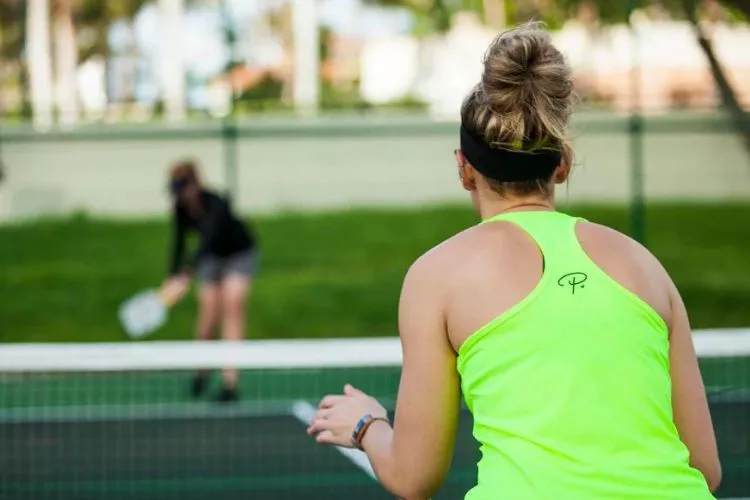
They have achieved a skill level between 2.0 to 2.5. Advanced beginners possess greater shot consistency, improved ball control, and grasp essential gameplay strategies.
They can maintain a rally and may even execute a few effective volleys. Though still developing their skills, advanced beginners are more comfortable on the court than complete novices.
How hard is it to go pro in pickleball?
Going pro in pickleball, like any sport, requires dedication, hard work, and determination. It can be challenging to break into the professional level (5.5 and above).
To achieve this, players must focus on refining their skills, mastering advanced techniques, and developing game strategies that can outwit opponents.
Moreover, competing in and winning local and regional tournaments will improve their player rating and provide valuable experience.
Additionally, seeking coaching from experienced players and incorporating a fitness regime to build strength and agility is crucial for aspiring professional players.
How do you advance to 3.5 pickleball?
To advance to a 3.5 pickleball skill level, you should focus on:
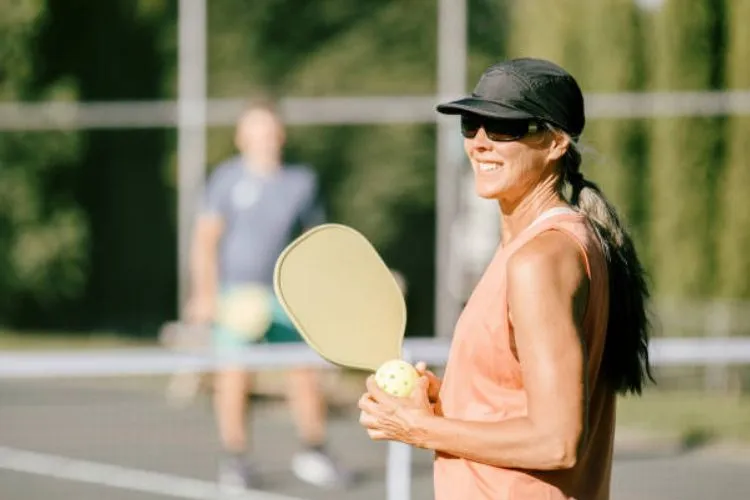
- Consistent serving and returning: practice aiming at various locations within the service box.
- Improved shot selection: develop an array of groundstrokes and volleys, as well as basic dinks and smashes.
- Better court positioning: learn when to approach the net and how to maintain an advantageous court position.
- Enhanced ball control: focus on consistently placing the ball in areas that challenge your opponent.
- Strategy understanding: implement tactics that disrupt your opponent’s rhythm, like targeting their backhand or varying shot pace.
- Physical fitness: increase mobility, speed, strength, and agility to cover the court effectively.
- Competitive play: participate in more matches or tournaments to gain experience and apply your learnings.
How do you get from 3.5 to 4.0 pickleball?
To move from a 3.5 to 4.0 skill level in pickleball, focus on the following:
- Consistency – maintain accuracy and control in all shot types, even during pressure situations.
- Advanced techniques – master the third-shot drop, dinking strategies, and slice shots.
- Strategic anticipation – read your opponents’ movement and shots to counter and take advantage.
- Positioning – refine court position and footwork, learning when to switch from offense to defense smoothly.
- Serve variation – experiment with spin and placement to keep opponents guessing.
- Physical fitness – continue building agility, strength, and stamina to improve performance and recovery.
- Mental toughness – develop a strong mindset for handling the ups and downs of competitive games, focusing on staying calm under pressure.
- Coaching and competition – seek guidance from experienced coaches or players, and compete in higher-level tournaments to sharpen your skills.
Conclusion:
Understanding pickleball skill levels and ratings is integral to your progress in this rapidly growing sport.
Whether you’re a beginner mastering the basics or a seasoned player aiming for professional rankings, the framework provided by these skill levels and ratings gives you a roadmap for improvement.
By unveiling a clear pathway to your goals, it can inspire you as a player to achieve more. Furthermore, engaging in competitive play and utilizing player ratings further fosters the essence of fair play that lies at the heart of this exciting and enjoyable game.

Pickleball’s more than a game to me—it’s a passion. I write, sharing its highs and lows, the thrills and the lessons. Some tales might draw you to the court, while others give a hint of the game’s magic. So, curious about my journey? Ready to dive deep into the world of pickleball with me? Let’s go.
